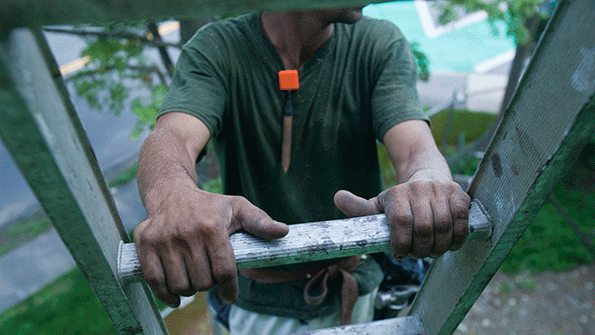
Ladders are so commonplace on work sites that most people don’t give a second thought when using them. But this is precisely why so many ladder-related accidents and fatalities occur. According to the Occupational Safety and Health Administration, falls are one of the “fatal four” causes of workplace accidents that result in death. A total of 338 out of 1,008 total worker deaths in 2018, or 33.5%, were caused by falls.
It is imperative that all workers receive training on the proper use of ladders. This instruction, and periodic refresher training, should be included in a company’s overall safety training program. Everyone can learn to be aware, informed and proactive about the proper use of ladders when working in any environment.
OSHA Safety Regulations on the Proper Use of Ladders
In order to promote worker safety and provide useful guidelines for training, OSHA issued a revised set of regulatory guidelines for ladder usage in 2016. The updated guidelines combine all regulations for ladders used in general industry under a single set of standards, with the exception of only a few situations.
Proper Procedure
• Before working with any ladder, read the instructions.
• Do not use a ladder when sleepy or if you are taking medication.
• Do not use ladders in doorways or other high-traffic areas.
• If a ladder must be used near a door, make sure the door is locked and marked with warning signs and/or cones.
• Inspect every ladder for damage before using.
• If a ladder is damaged, do not use it and clearly identify it for disposal.
Proper Setup
• Check labeling to verify that a ladder has the proper duty rating and length for your task.
• The feet of any ladder should both be sitting firmly on a hard, level surface.
• Stepladders should be spread fully open and the legs locked into position.
• Test the ladder to verify that it is secure.
• Leaning ladders must be placed at an angle so they are one foot from the wall for every four feet of height (4:1 ratio).
Proper Ladder Climbing
Always be sure the ladder rungs and your hands or gloves and shoes are dry. When possible, ask another person to secure the bottom of the ladder and prevent others from disturbing it. When this is not possible, anchor the ladder at the bottom to prevent slippage. It is also advisable to anchor the top of the ladder to something solid.
Proper ladder climbing procedure requires workers to keep a three-point grip on the ladder at all times. For example, hold the ladder with two hands and one foot or one hand and two feet. Move only one hand or foot at a time. Always face the ladder and avoid any distractions. Climb slowly with your weight centered on the ladder.
Do not lean back or to either side when working on a ladder. Never stand on the top two rungs of a stepladder, or the top four rungs of an extension ladder. When possible, wear a safety harness that secures you to the ladder or work surface.
Ladder Safety and Safety Training
The National Institute for Occupational Safety and Health (NIOSH) has even produced a ladder safety app that workers can download in English or Spanish to their iOS or Android smartphones or other devices. Among other features, the app provides a graphical guide for selecting, inspecting, and positioning ladders safely.
For more information about safety training and compliance for your business, call the safety professionals at SafetyPro Resources. We take care of your company's safety compliance, so you can focus on running your business.

















